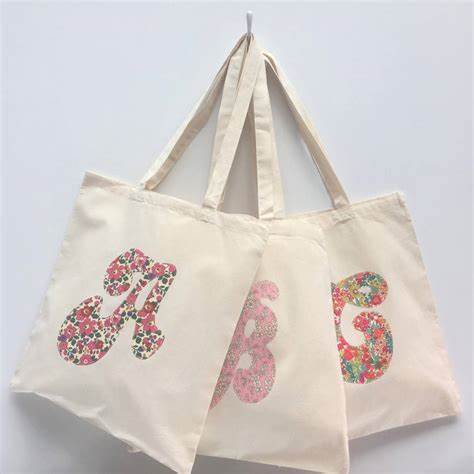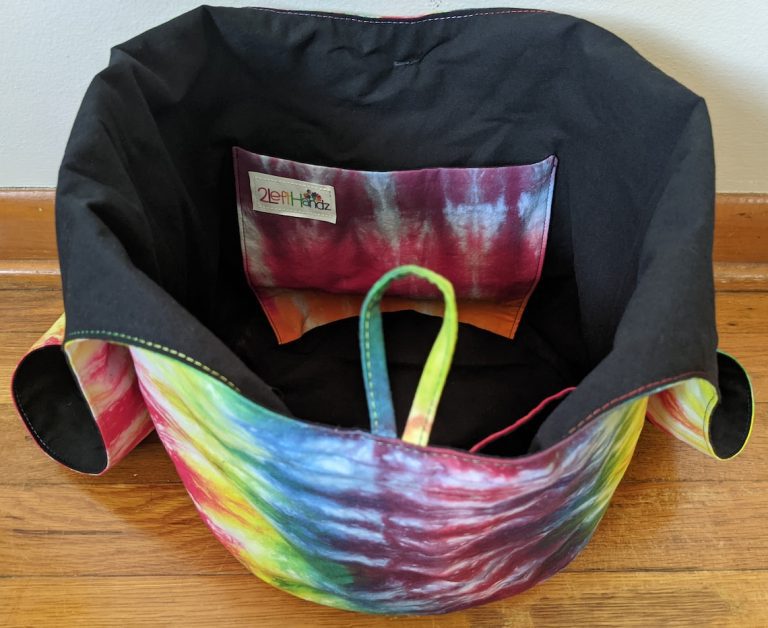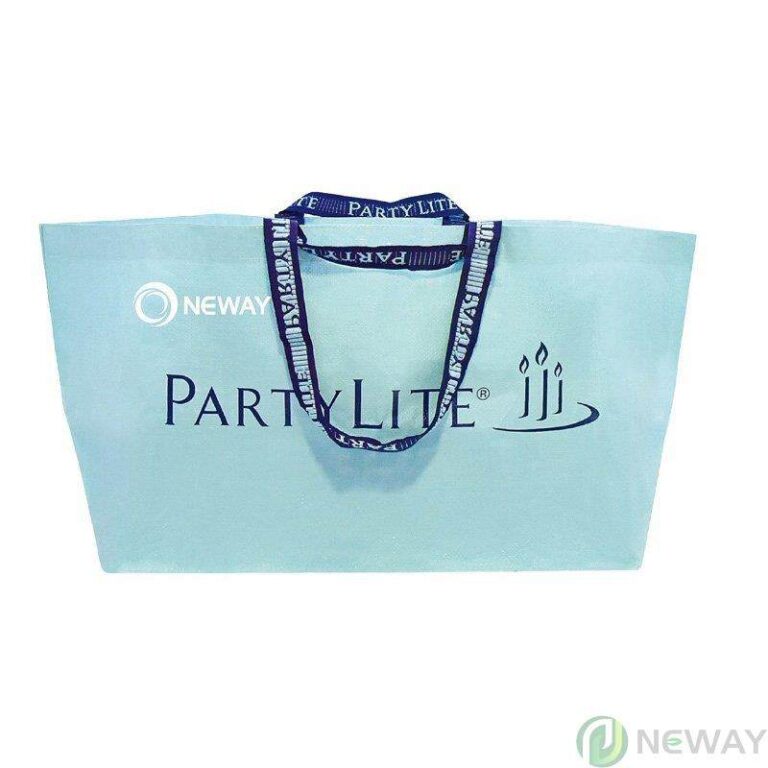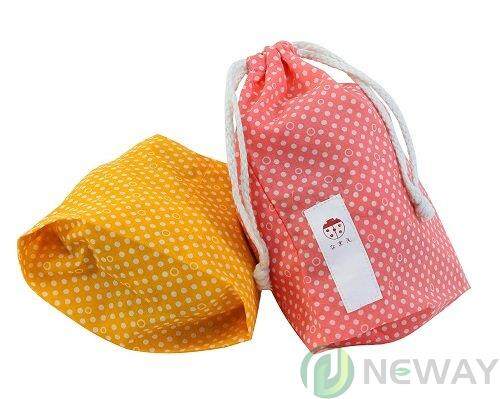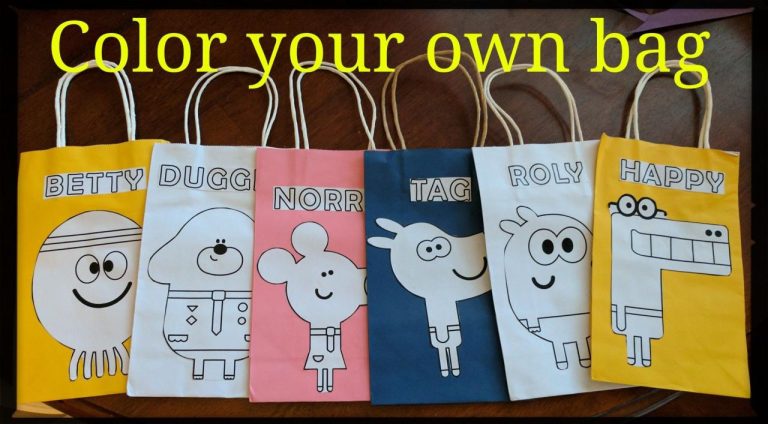The Ultimate Guide to Non-Woven Bags: Durable, Stylish, and Eco-Friendly Choices
This article embarks on an enlightening journey into the world of non-woven bags, exploring their fabric, manufacturing process, and types. It underscores the importance of these bags in the current eco-conscious landscape, highlighting their durability, style, and environmental friendliness. This comprehensive guide aims to provide an in-depth understanding of non-woven bags, from their creation to their practical applications.
What Is Non-Woven Fabric?
Non-woven fabric is a unique material that has revolutionized various industries, from medical to geotextiles and even retail. Unlike traditional fabrics that are woven from threads, non-woven fabrics are ingeniously crafted from entangled fibers, bonded through various processes such as chemical, mechanical, heat, or solvent treatment. This unique construction offers unparalleled versatility, making non-woven fabric an ideal material for a multitude of applications.
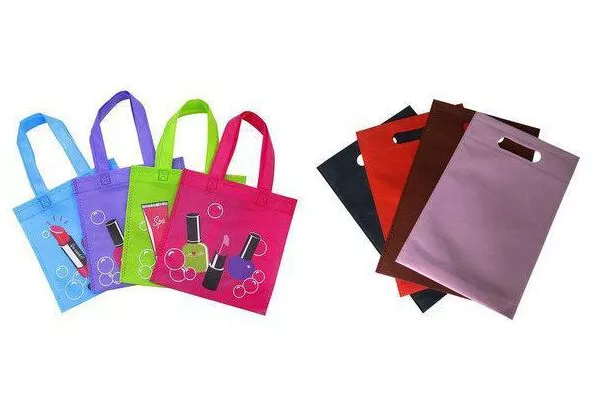

Non-woven fabric is a fabric-like material made from staple fiber (short) and long fibers (continuous long). Some non-woven materials lack sufficient strength unless densified or reinforced by a backing. In recent years, non-wovens have become an alternative to polyurethane foam.
Key characteristics of non-woven fabrics include:
- Versatility: Non-woven fabrics can be made from various types of fibers, such as natural fibers like cotton or synthetic fibers like polyester. This allows for a wide range of applications and uses.
- Strength and Durability: Non-woven fabrics can be engineered to have specific strength and durability properties, making them suitable for various applications where strength is important.
- Absorbency: Depending on the fibers used and the manufacturing process, non-woven fabrics can exhibit different levels of absorbency. This makes them useful for products like wipes, medical dressings, and more.
- Breathability: Non-woven fabrics can be designed to be breathable, which makes them suitable for products like disposable diapers and medical garments.
- Cost-Effectiveness: Non-woven fabrics can often be produced at a lower cost compared to traditional woven fabrics due to the simpler manufacturing processes involved.
- Customizability: Non-woven fabrics can be engineered to have specific properties such as softness, stretch, texture, and more, depending on the intended application.
How Are Non-Woven Bags Made?
The journey from raw materials to a non-woven bag is a tale of innovation. It begins with the selection of fibers, be it synthetic like polypropylene or recycled materials, aligning with the eco-conscious ethos of today. These fibers are then skillfully entangled, employing methods like spunbonding or melt-blowing, to create a fabric that’s not just robust but also embodies a fine balance between durability and disposability.
The manufacturing process of non-woven fabric involves forming a fibrous web, entangling or bonding the fibers in the web to impart mechanical integrity to the structure, and finishing or converting the fabric to impart some special properties to the fabric that the customer specifies.
The various methods for bonding non-woven fabrics include:
- Needle punching: A process of bonding non-woven web structures mechanically by interlocking the fibers through the web.
- Stitch bonding: A method of consolidating fiber webs with knitting elements with or without yarn to interlock the fibers.
- Thermal bonding: The process of using heat to bond or stabilize a web structure that consists of a thermoplastic fiber.
- Chemical bonding: The process of bonding a web by means of a chemical is one of the most common methods of bonding.
- Hydro entanglement: A process of using fluid forces to lock the fibers.
This fabric then takes shape under the skilled hands of craftsmen or advanced machinery, emerging as bags that are not just carriers of goods but also statements of environmental responsibility. Non-woven bags are 100% recyclable, bio-degradable, and can burn without toxic contaminants. They are also liquid repellent, washable, and air permeable.
Applications of Non-Woven Fabric
Non-woven fabrics find applications in a wide range of industries and products, including:
- Medical and Hygiene: Surgical gowns, masks, wipes, bandages, and diapers.
- Geotextiles: Used in construction and civil engineering for erosion control, drainage, and road stabilization.
- Automotive: Car interiors, upholstery, and trunk liners.
- Filtration: Air filters, water filters, and industrial filtration applications.
- Packaging: Shopping bags, tote bags, and promotional bags.
- Apparel: Non-woven fabrics can be used as interlinings, providing structure and shape to garments.
- Home Furnishings: Tablecloths, upholstery, and curtains.
Types of Non-Woven Bags
In the realm of non-woven bags, a variety of options await, each with its unique characteristics and uses. Let’s delve into the details of these types, their unique attributes, and applications.
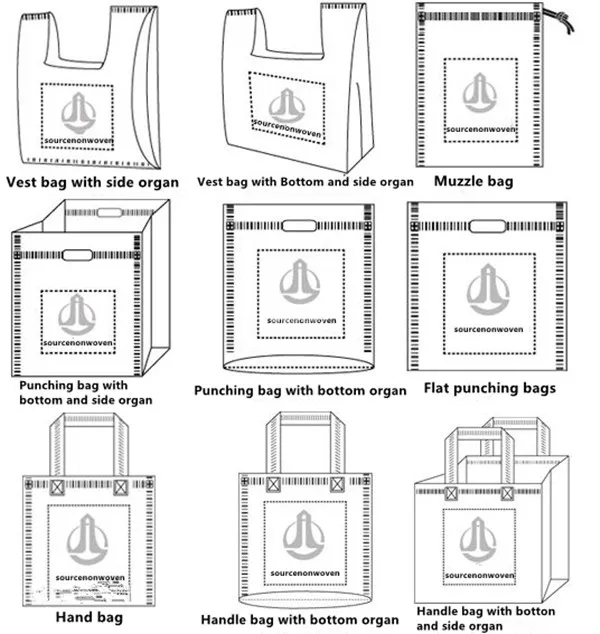

Spunbound Non-Woven Fabric
Spunbound non-woven fabric, also known as spunlaid, is a paragon of strength and versatility. This fabric is born from the harmonious intertwining of filaments and fibers, resulting in a material that’s not just strong but also versatile. It’s manufactured in a continuous process where the fibers are spun and later spread in a sheet using a deflector. This process results in faster belt speeds and produces cost-effective products.
Spunbound fabric finds its place in various domains, including textile and medical packaging. It’s used for several purposes like disposable masks, sanitary napkins, and even household items like table covers and chair covers. The high tear strength, water resistance, and sound resistance of this fabric make it a favorite in many industries.
Airlaid Non-Woven Fabric
Airlaid non-woven fabric is another type of non-woven fabric where elements of fabric are dispersed and condensed, predominantly using wood pulp, to form a fabric that boasts enhanced bonding capabilities.
Drylaid Fabric
Drylaid fabric incorporates natural fibers with additions like synthetic fiber, carbon, or steel. This fabric is tailored for those seeking durability with a touch of sophistication. Drylaid nonwovens are made from staple fibers, which are opened and mixed before processing. The web formation takes place on roller cards with rotating workers and strippers.
Wetlaid Fabric
Wetlaid fabric emulates the papermaking process, using water as a bonding agent. This results in bags perfect for lighter duties.
Polypropylene Non-Woven Bags
Polypropylene (PP) non-woven bags are made from recycled plastic fibers. These bags are strong, durable, and water-resistant, making them ideal for a wide range of purposes. They are also lightweight and easy to carry around, which adds to their convenience.
Polyester Non-Woven Bags
Polyester (PET) non-woven bags, also known as recycled plastic bags, are a popular choice due to their durability and strength. They are made from recycled plastic bottles, which makes them a more environmentally friendly option than traditional bags.
Nylon Non-Woven Bags
Nylon non-woven bags are an excellent choice due to their durability, strength, and resistance to water. These bags are made from synthetic fibers that make them stronger and more resistant to wear and tear, making them ideal for carrying heavy loads without breaking or tearing.
Each type of non-woven bag has its own unique benefits and drawbacks. Businesses and individuals must consider these factors when choosing a bag for their needs. By choosing an environmentally sustainable option, we can help reduce waste and protect our planet for future generations.
| Bag Type | Material | Environmental Impact | Cost |
|---|---|---|---|
| Polypropylene | Recycled plastic fibers | Biodegradable or compostable, manufacturing process requires significant energy | Low |
| Polyester | Recycled plastic bottles | Not biodegradable or compostable, can be recycled, more expensive to manufacture | Medium |
| Nylon | Synthetic fibers | Not biodegradable or compostable, more expensive than polypropylene bags | High |
Non-woven bags offer a spectrum of choices, each with its unique attributes and applications. Whether you’re looking for strength, versatility, or environmental sustainability, there’s a non-woven bag that’s just right for you.
Are Non-Woven Bags Eco-Friendly?
Non-woven bags have gained popularity as an eco-friendly alternative to single-use plastic bags. These bags are made from non-woven polypropylene fabric, which is lightweight, durable, and reusable. However, it’s essential to consider their entire life cycle and the materials used to make them when assessing their eco-friendliness.
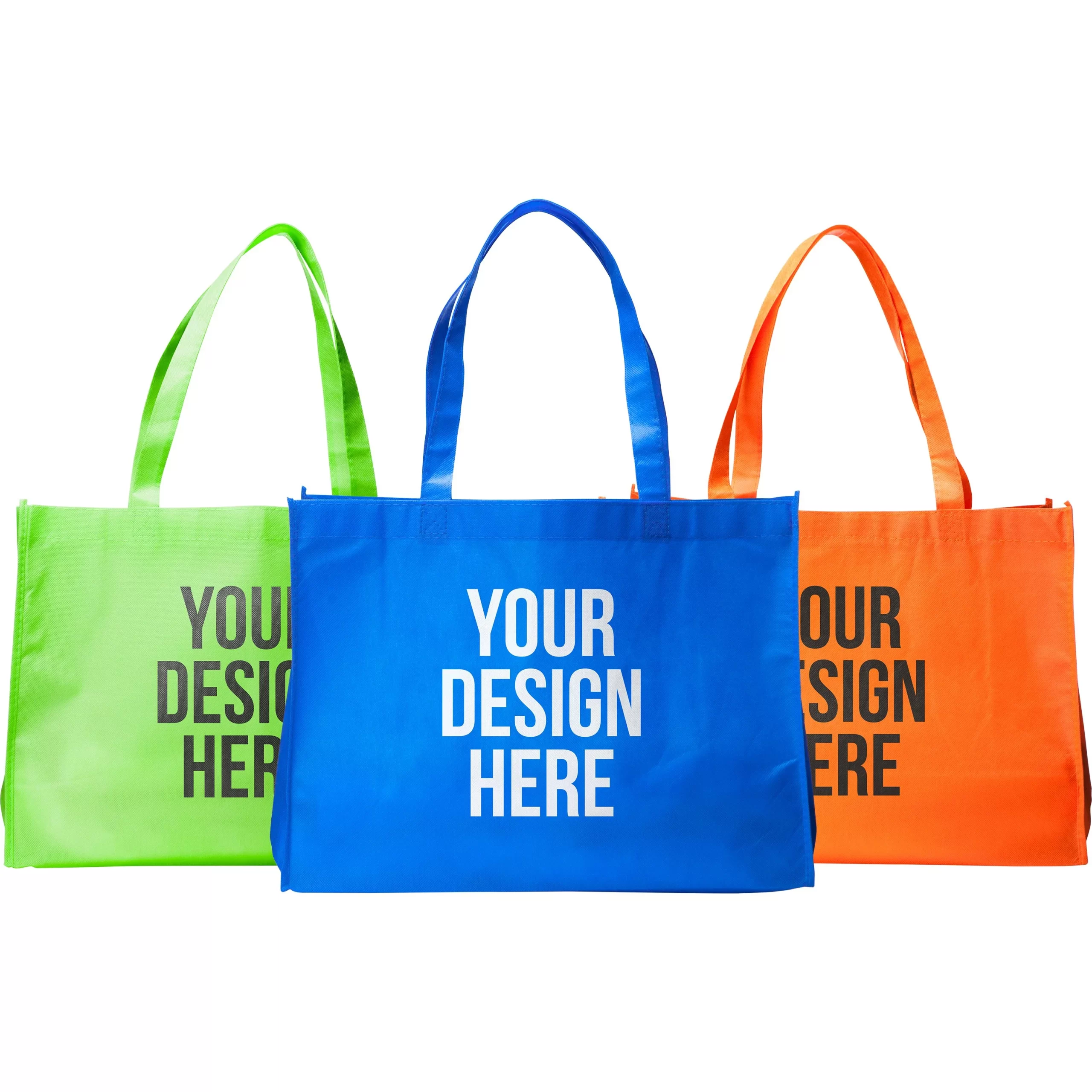

Sustainability of Non-Woven Bags
Non-woven bags promote a greener earth because they are reusable, easy to clean, recyclable, and sometimes made with recycled products. They can be quickly wiped clean, and some are machine washable in cold water if they are drip-dried. Most non-woven polypropylene bags are also made of 5-type recyclable plastic.
Environmental Impact
While non-woven bags are more eco-friendly than single-use plastic bags, they are not entirely eco-friendly due to the materials they are made from. Both polypropylene and polyester are forms of plastic created as a result of refining crude oil. To make polypropylene and polyester, crude oil has to be refined with different chemicals and heavy manufacturing processes to create plastic polymers and give them certain characteristics.
However, as long as you reuse non-woven bags as much as possible and for as long as possible, you can still be eco-friendly since you won’t be using as many single-use plastic bags.
Durability and Reusability of Non-Woven Bags
Non-woven bags are a symphony of strength and longevity, challenging the disposability culture by offering a durable alternative. These bags don’t just endure; they thrive through multiple uses, whether for grocery shopping or as a fashionable accessory. Washable and resilient against wear, they resist the shedding of microplastics, a testament to their eco-friendly design. Even in their final stages, these bags can be recycled, ensuring a full-circle life cycle that champions sustainability.
Comparing Non-Woven with Other Bag Types
When weighing options, understanding the differences between bag types is crucial. Non-woven bags, known for their robustness and versatility, stand in contrast to paper and plastic bags. While woven bags are made from woven fabric, non-woven bags consist of entangled fibers, offering comparable strength and greater customization opportunities for graphics and branding.
| Bag Type | Durability | Reusability | Environmental Impact |
|---|---|---|---|
| Non-Woven | High | High | Low (if reused and recycled) |
| Paper | Low | Low | Medium (biodegradable, but resource-intensive to produce) |
| Plastic | Low | Low | High (non-biodegradable, contributes to pollution) |
| Woven | High | High | Medium (resource-intensive to produce, but reusable) |
Factors Affecting Durability and Reusability
The durability and reusability of non-woven bags depend on several factors:
- Material: Non-woven bags are typically made from polypropylene, a strong and lightweight material that resists wear and tear.
- Thickness: The thickness of the non-woven fabric affects the bag’s strength and durability. Thicker bags can carry heavier loads and withstand more wear.
- Construction: The quality of the bag’s construction, including stitching and seams, plays a significant role in its durability and reusability.
- Care: Proper care, such as gentle washing and air drying, can prolong the life of non-woven bags.
Tips for Maximizing Durability and Reusability
To get the most out of your non-woven bags and minimize their environmental impact, follow these tips:
- Reuse: Use your non-woven bags as much as possible for various purposes, such as grocery shopping, carrying items to work, or even as a gym bag.
- Wash: Keep your bags clean by wiping them down with a damp cloth or washing them gently in cold water. Air dry them to maintain their shape and strength.
- Store: Store your non-woven bags in a cool, dry place to prevent damage from moisture or heat.
- Recycle: When your non-woven bags reach the end of their life, recycle them properly to minimize their environmental impact.
Non-woven bags are a durable and reusable alternative to single-use plastic and paper bags. By choosing non-woven bags and using them responsibly, you can contribute to a more sustainable future.
Choosing the Right Non-Woven Bag: Factors to Consider
Selecting the perfect non-woven bag involves considering various factors. From stitching to lining, edges, hardware, zippers, handles, straps, and weight, each element plays a pivotal role in the bag’s functionality and durability. These considerations ensure that the chosen bag not only meets practical needs but also aligns with personal or business branding requirements.
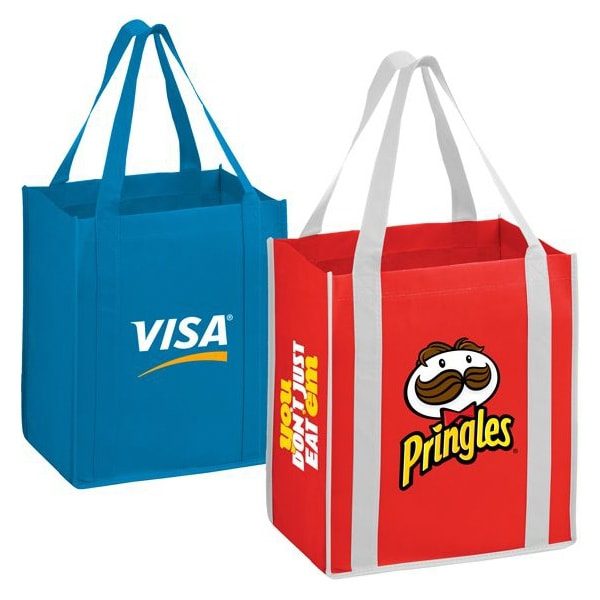

Quality and Durability: Non-woven bags can vary significantly in quality depending on the manufacturer. Poorly made bags can tear easily, have weak handles, or lack durability. Therefore, it’s crucial to assess a manufacturer’s quality control processes before making a decision. Look for manufacturers that have stringent quality control measures in place to ensure that every bag meets the highest standards.
Materials: Non-woven bags can be made from various materials, with some being more durable and environmentally friendly than others. Look for manufacturers that use high-quality materials that are resistant to tearing and can withstand repeated use.
Sustainability: When choosing a non-woven bag, inquire about their sustainability initiatives. Look for manufacturers that use recycled or biodegradable materials to make their non-woven bags. Additionally, consider their manufacturing process and whether they minimize waste and energy consumption.
Pricing and Affordability: While quality and sustainability are essential considerations when choosing a non-woven bag, pricing and affordability also play a significant role. It’s important to find a manufacturer that can provide high-quality bags at a competitive price point.
Types and Designs of Non-Woven Bags
Non-woven bags come in a variety of types, each suited to specific needs and aesthetics:
- Non-Woven D Cut Bags: These bags are known for their distinct D-shaped cutouts, serving as handles.
- Non-Woven Loop Handle Bags: Featuring sturdy loop handles, these bags offer enhanced carrying comfort.
- Non-Woven W Cut Bags: Characterized by their W-shaped cutouts, these bags are a popular choice for lightweight items.
- Non-Woven Bag With Thick Plastic Support Bottom: Ideal for heavier items, these bags are reinforced with a thick plastic bottom for added support.
Common Uses of Non-Woven Bags
The versatility of non-woven bags extends to their uses:
- Non-woven shopping bag: A staple for retail and grocery shopping.
- Non-woven school bags: Durable and lightweight, perfect for students.
- Non-woven textile bag: Ideal for carrying and protecting textiles.
- Non-woven grocery bags: Robust and reusable, reducing plastic waste in grocery shopping.
In addition to these common uses, non-woven bags can also be used for gift wrapping, sustainable holidays, swag bags at events, party favor bags, magazine holders, project bags for crafts, carry-on luggage, overnight bags, and home organization.
Pricing of Non-Woven Bags
When it comes to the world of bags, non-woven bags have carved out a niche for themselves. They’re not just about functionality; they’re also about quality and aesthetics. The cost of these bags varies based on several factors, including size, quality, and type. Larger and higher-quality bags typically command a higher price. Additionally, prices may vary depending on the manufacturer, emphasizing the importance of direct communication with suppliers for the best deals.
Materials and Quality
Non-woven bags are made from bonded polypropylene plastic fibers, often thermal pressed to produce a “woven” look. This material is not only recyclable, making the bags an eco-friendly choice, but also lends them extra durability. An interesting variant is the waterproof non-woven bag, which offers additional protection and utility. The choice of material plays a crucial role in determining the bag’s durability, aesthetics, and suitability for various uses.
Sizes and Customization Options
Non-woven bags come in various sizes to cater to different needs, from small pouches to large shopping bags. For instance, laminated non-woven bags, a popular choice for various needs, come in sizes ranging from small (12″ x 10″ x 4″) to large (14″ x 16″ x 5.5″).
Customization plays a pivotal role in non-woven bags, offering options like rope handles for enhanced aesthetics and practicality. This flexibility allows for tailoring bags to specific requirements, whether for personal use or branding purposes. For example, some suppliers offer custom non-woven bags at less than $2 each for select styles, with the price based on the quantity, style, size, and imprint colors chosen.
Quantity and Pricing
The quantity of bags ordered also significantly impacts the price. Generally, the more bags you order, the cheaper the price per bag. For instance, on Amazon, you can find packs of 80 non-woven tote bags for around $35, which works out to less than $0.50 per bag.
Market Trends
The non-woven bags market is expected to grow steadily in the coming years, driven by increasing demand for sustainable and innovative products. By 2030, the global non-woven bags market size is projected to reach multimillion figures, displaying an unexpected compound annual growth rate between 2023 and 2030.
Conclusion
In conclusion, non-woven bags stand as a testament to sustainable innovation, blending functionality with environmental responsibility. From their diverse types and uses to their customizable nature, these bags offer a practical and stylish solution in our quest for sustainable living. Their versatility, durability, and eco-friendliness make them an indispensable choice for consumers and businesses alike, reflecting a growing awareness and commitment to environmental sustainability.

